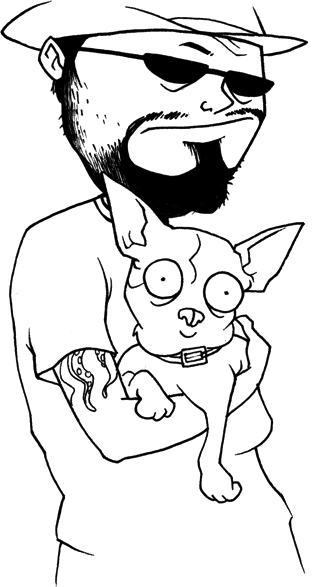Twitter for Adults
Congratulations on getting a Twitter account (or having one for a while)! You’re now taking part in the biggest social experiment in human history (more on that later). But just because you’re floating in a global sea of idle thoughts doesn’t mean you have to drown.
You can be a grownup and participate on Twitter, but it takes some doing. Here are the two ways I’ve found to use Twitter as an adult.
Way 1: Curate Your Follower List
At the bottom of your main account page, there’s an innocuous checkbox labeled “Tweet Privacy.” It defaults to unchecked. If you check it, your tweets will only be seen by people you approve.

This is a good option for private people. Your tweets will not be indexed by search engines and no one will see what you tweet except your chosen followers. It allows you to speak freely without worrying too much about reactions from strangers. A lot of people I talk to don’t seem to know that this is even an option.
But it’s a pain. While your tweets are private, your other information (name, url, bio, location) is still public and viewable on your profile page, along with a message that you’re protecting your tweets so people can find and ask to follow you. As a result, you’ll get an email every time someone wants in, and each time you have to make a decision.
I spent my first year or so on Twitter operating this way and it was a drag. The mental overhead it added was worse than the idea of strangers reading my idle thoughts. So, eventually, I turned the option off and went public (deleting a few drunken tweets beforehand, of course).
Way 2: Participate Publicly but Carefully
I love Twitter, but there’s a lot of social media noise that comes from simply having an account. All the numbers on your profile page are like scores, which can make you feel like you’re losing from the start. So here’s how I use Twitter and mostly retain my sanity.
- Turn off New Follower Emails. I turned off the emails that tell me who started following me from the get-go. They just made me worry too much. “Who is that? Should I follow them? Why are they following me?” Instant writer’s block.
To turn them off, go to your settings under Notices and uncheck the box labeled “New Follower Emails.” This way, you can concentrate on the fun part without the constant email reminders.

- Ignore your follower count. (Aside to Twitter: Why can’t we turn that off?) The number goes up, the number goes down. Who cares? Your follower number has no bearing on your self-worth, but when it goes down, you can’t help but feel bad. Make a conscious decision to ignore it.
- Interact judiciously. Follow people who seem interesting, stop following anyone who’s not. You don’t have to follow everyone you know – that’s what Facebook is for. Check your @Mentions, but remember that you don’t have to reply when someone talks at you. Block anyone who bothers you. Remember that you are solely responsible for where you point your attention. If what you see upsets you, direct your attention somewhere else.
- Turn off retweets when necessary. Just because you enjoy following someone’s tweets doesn’t mean you’ll enjoy everything they retweet. Unfortunately, you can’t turn retweets off altogether (aside to Twitter: please?), but you can disable retweets from individual members by going to their profile page and de-greening the retweet icon.

- Remember where you are. Any thought worth thinking takes more than 140 characters to write. Twitter is useful for a great many things, but nuanced discussion of important topics is not one of them. Twitter is like shouting over the band in a bar. You can do it, but you have to keep it short: “I love this song!” Don’t get baited into a back-and-forth with a stranger. The immediate, short nature of Twitter is good at amping up disagreement, and bad at reaching understanding.
Twitter lets you reveal a little bit of the running commentary in your brain to the people who may care enough to follow it. At its best, it’s a reminder that we’re all connected, and no matter how you feel, someone out there feels like that, too. In this way it’s the biggest social experiment in human history. It’s a sci-fi plot worthy of Philip K. Dick: “What if a technology made us all slightly telepathic?” Twitter is connecting our brains in ways we don’t fully understand yet.
But Twitter is still evolving, and its usage evolves, too. How we use it now is different than how we used it a couple years ago. There is no one right way to use Twitter, and you should ignore anyone who says there is. Including me.
Twitter is not one cohesive community, but a giant overlapping cloud of mini-communities, each developing its own set of norms. It’s up to you to decide what works best for you.
